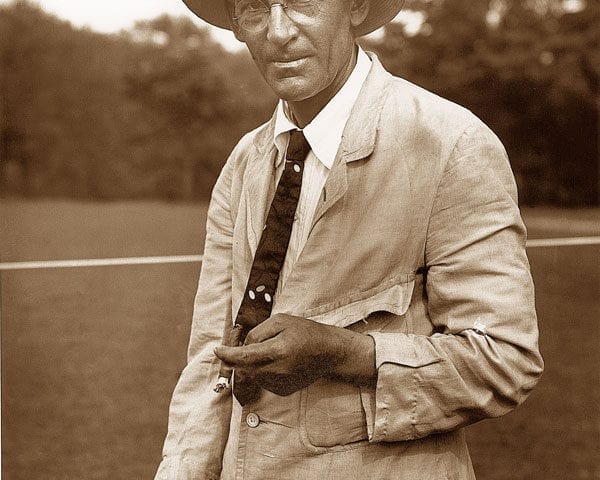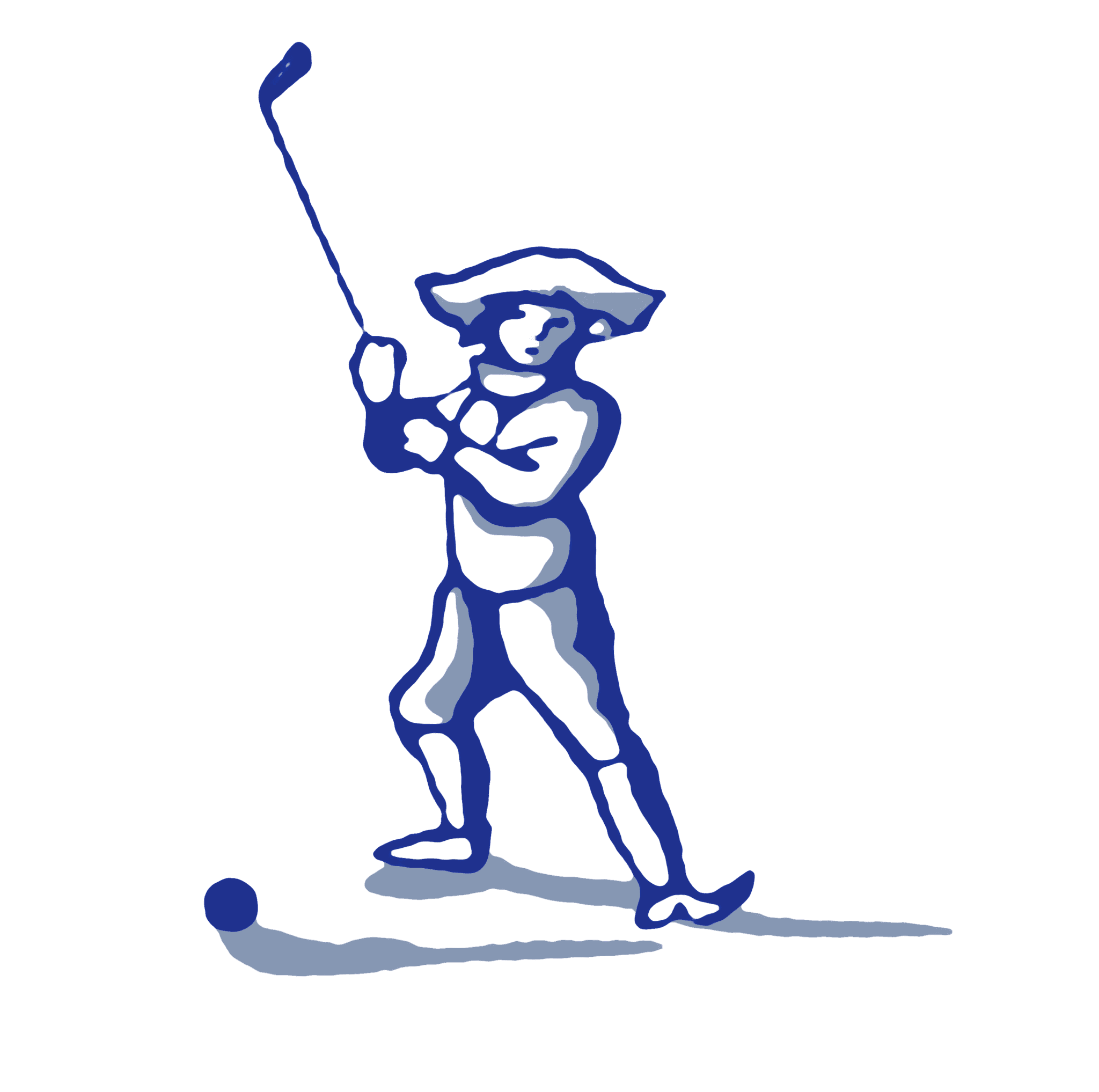Although Travis came to the game little later in life than most (near his 35th birthday), he was soon the country’s top amateur golfer, winning the U.S. Amateur in 1900, 1901, and 1903. In 1904, he became the first player from America to win the British Amateur, a feat that would not be duplicated for another 22 years. The news of Travis’s British victory sparked a surge of interest in the game of golf throughout the United States. In 1904, champion British golfer Harold Hilton described Travis: “In style, the American champion is essentially what may be termed a made golfer, for his is a style which by the wildest stretch of imagination could not be called ornate. Still, it boasts useful attributes; it is business-like and determined, and is one in which no energy is wasted. Like all golfers who really scored a success at the game, he keeps the right elbow well in to the right side, holding the hands very low, like Messrs. Hutchings, Fry and G. F. Smith—three of the best examples of golfers who have risen to eminence while lacking the advantage of playing the game in their youth. The swing of the club is not long—in fact, it might be termed a three-quarter swing—but it is sufficient to get a free action with the wrist, and although Mr. Travis does not obtain an abnormal carry, he nevertheless gets a long roll on the ball, and against the wind in particular he is beyond the average as a driver, especially as he appears to have mastered the art of the scientific hooking.”
Among his other major victories as an amateur golfer were three North and South Amateurs at Pinehurst and four Metropolitan Golf Association Championships. When Travis won his fourth MGA Championship, in 1915, at the age of 53, he beat 28-year-old Jerome Travers in the final match. Just the year before, Travers had eliminated Travis in the semi-finals of the U.S. Amateur. With declining health diminishing his skills, Travis announced his retirement from competitive golf in 1916.
Overall, Travis competed in 17 consecutive U.S. Amateurs from 1898 to 1914, compiling a 45-14 record, earning medalist honors three consecutive years (1900-02), and losing to the eventual champion on five occasions. He competed in six U.S. Opens between 1902 and 1912 and was low amateur five times and tied for third low amateur the other. Travis placed second in the 1902 U.S. Open Championship. In the January 28, 1922 issue of The American Golfer, the following response was given to a query about “How many tournaments Mr. Travis has won, counting in every variety?”: “Our opinion is that Mr. Travis has won more low gross, low net and open tourneys than any other living golfer. He was practically unbeatable for a stretch of six years from 1898 to 1904 during which time he played in double or triple the number of events entered by either John Ball or Chick Evans. A guess at the number of his trophies would place it over five hundred and perhaps nearer to a thousand. In 1901, Travis was national champion and in 1915 he was again the Metropolitan champion. His southern victories were numerous.”
Travis founded The American Golfer Magazine, popularized the Haskell rubber cored golf ball he used to win the 1901 U.S. Amateur and made the Schenectady Putter (a center shafted mallet he used to win the 1903 U.S. Amateur and 1904 British Amateur that was subsequently banned by the R & A) one of the hottest commodities in golf equipment. Having all of those listed accomplishments, possibly his most enduring legacy may be the many premier golf courses he designed or remodeled throughout his career. Four Travis-designed or redesigned courses are regularly included in Golfweek’s rankings of America’s top 100 “Classic” courses: Country Club of Scranton, Ekwanok Country Club (assisted John Duncan Dunn), Westchester Country Club’s West course, Hollywood Golf Club (redesigned Mackie’s work), and Garden City Golf Club (remodeled Emmet’s work).

